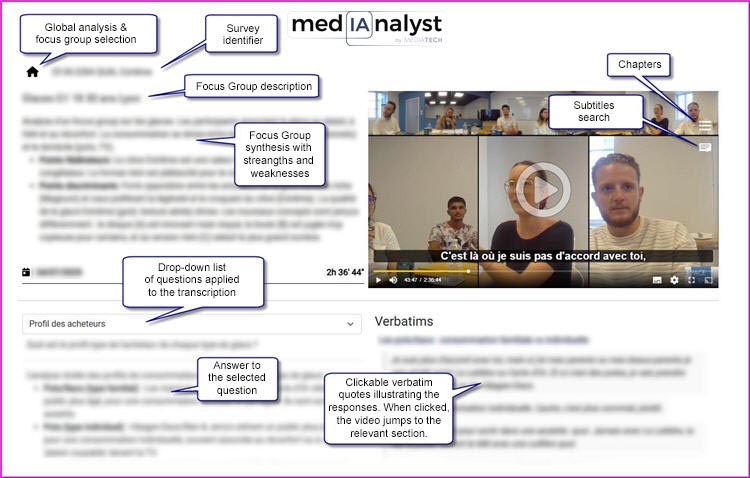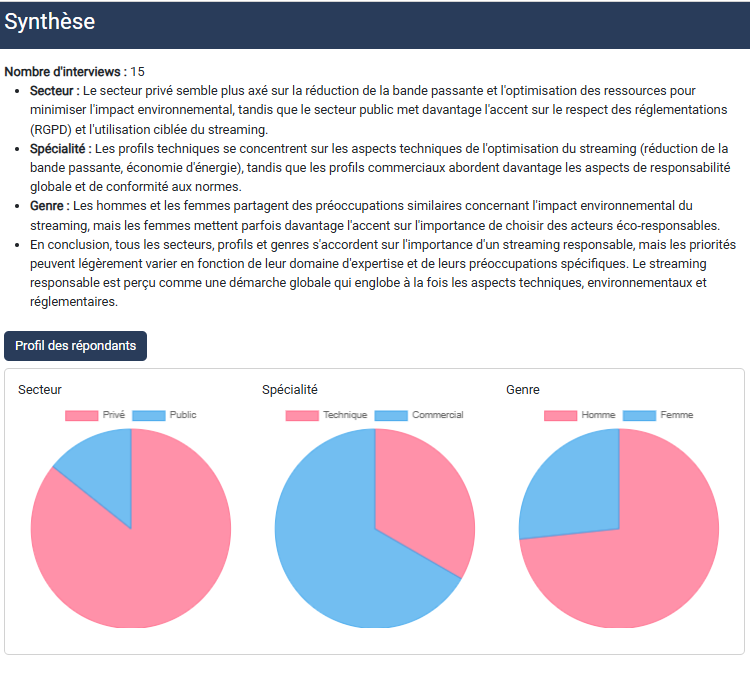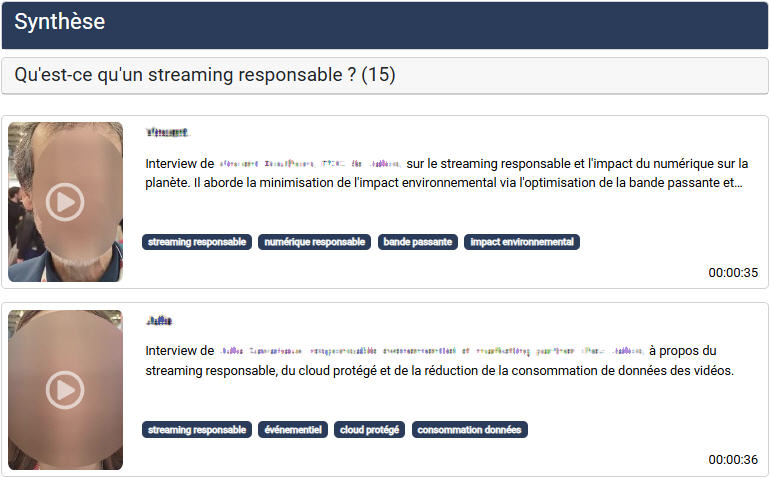For nearly 30 years, the Medianalyst methodology has been associated with media research (TV, radio, film, advertising, etc.) using an audience appreciation measurement system, first through in-person sessions and later through online panels.
Qual or Quant?
Marketing and opinion research is divided into two categories: qualitative studies (“qual”) based on individual interviews and focus groups, and quantitative studies (“quant”) based on surveys administered by phone, online, or face-to-face.
To put it simply, qual helps reveal perceptions and opinions from small samples, while quant helps quantify them across large samples representative of a general population. At the intersection are methodologies that allow for qualitative studies on large population samples.
MedIAnalyst falls into this latter category by accelerating traditional qual studies, which makes it possible to increase the number of people surveyed and expand the collection of contributions and testimonials by automating their analysis.
The benefits are reduced costs, shorter timelines, and richer reporting.
Its main applications are:
- Focus group analysis
- Video message analysis
- Audio message analysis (Vocalyze)
Augmented Focus Groups
The primary difficulty of a focus group is its moderation. In 2 or 3 hours, a discussion must be structured to understand a market, expectations, barriers, and drivers. The moderator must then transcribe everything, cross-reference information, identify points of convergence and divergence, step back, and write a summary… an operation that must be repeated for each focus group to build homogeneous samples in terms of socio-demographic characteristics (age, gender, location, socioeconomic status, etc.) or consumption habits.
MedIAnalyst does all this work, regardless of the language spoken in the groups: transcribing discussions, identifying speakers, summarizing by participant, providing a global summary, answering specific questions, comparing groups, and more.
A Video Example
We borrowed a clip of a focus group in English from the University of Minnesota. The discussion is about “healthy” families who engage in physical activities or maintain a balanced diet. The transcription is available in English and French, with the speakers identified.
The “Classic” Report
In a MedIAnalyst study, the results can be delivered as a written report or an interactive dashboard that allows you to listen to the verbatims supporting the conclusions.
Here is a sample summary of this focus group excerpt, with timecodes indicating the points that illustrate each analysis.
The discussion highlights several recurring themes describing families considered healthy and of normal weight.
- Shared activities: The most unanimously emphasized point is that these families do a lot of things together. Whether it’s cooking, eating, playing sports, or simply having conversations, the time spent as a group is a pillar of their lifestyle.
- An intentional and positive approach to food: Food is not an afterthought but is managed consciously. This includes meal planning, involving children in the preparation, and a desire to make healthy food fun and creative. An important characteristic is the absence of moral judgment about food (“good” vs. “bad”), replaced by a notion of moderation and enjoyment, whether for vegetables or a treat.
- Integrated and valued physical activity: Physical activity is naturally integrated into daily life rather than being a chore. This is achieved by strictly limiting screen time, using the local environment (neighborhood, parks), owning pets that require exercise, and turning exercise into a game or a motivating goal.
- The importance of structural and socioeconomic factors: Participants acknowledge that these lifestyles are heavily influenced by external factors. Living in a safe neighborhood with green spaces and strong social ties greatly facilitates outdoor activities and community monitoring of children.. Furthermore, several speakers point out that financial comfort is a determining factor, as it allows for the purchase of nutritious food, having free time, and paying for sports activities, especially during the winter. [21:07, 23:11, 23:27]
Analyses can also be done on an individual basis. For example, here is the summary of Ghazaleh’s comments:
Ghazaleh emphasizes meal planning as a key factor, which avoids unhealthy last-minute decisions. She observes that the healthy families she knows enjoy trying a wide variety of foods, whether at home or in restaurants, to diversify their diet. Physical activity is deliberately planned and scheduled, such as trips to the playground or indoor recreation centers (trampoline parks) during the winter. She specifies that this is a conscious decision by both parents, particularly to meet their children’s need for activity.
The Interactive Report
The analysis is more typically presented in an interactive interface divided into four zones, which helps to understand which statements led to the conclusions:

Analysis of Video Responses and Testimonials
When the visual element is important, respondents can send videos via a form or an application. The analysis will generally focus on the transcription of their words, but object recognition or mood detection are also possible.
Video is useful, for example, for studies on beauty products, clothing, glasses, recipes, or automotive equipment. Depending on the case, faces can be blurred to preserve the anonymity of the respondents.
At a recent trade show, we asked visitors about their interpretation of “responsible streaming.” Their answers were filmed and analyzed in real-time, with the summary being updated as each new testimonial arrived.
Here is a screenshot of the summary after processing the first 15 testimonials.

Keywords are extracted from each response, which is accompanied by a summary and can be viewed.

For each conclusion of the study, you can see in how many testimonials it appears, and you can click on the main verbatims to play them back.
For example, 11 out of 15 people perceived “responsible streaming” as a topic related to minimizing environmental impact. The verbatims can be read and heard from the interface.

Analysis of Voice Messages
When video is not necessary or justified, a voice message is even easier to leave and more anonymous. It allows for greater spontaneity and therefore a higher number of responses.
To set up toll-free numbers and voice mailboxes, we created the Vocalyze solution.

So, to accelerate and enrich your next studies or to collect responses, opinions, or grievances on voice or video mailboxes, think MedIAnalyst!
The Big “Plus” of MedIAnalyst
The true beauty of an interactive report and the (relevant) use of AI is that you can ask a new question at any time to get a new analysis applied to the existing corpus of responses!
To Go Further
Find an article on this blog about the applications of MedIAnalyst for public organizations as well as use cases for video in customer relations and e-reputation, for which MedIAnalyst is a natural extension.
Key Takeaways
What is the main problem with traditional qualitative research that MedIAnalyst addresses?
Qualitative studies (individual interviews or focus groups) are very rich in information, but their analysis is an extremely long and costly process. The manual transcription of audio or video recordings and their analysis are particularly time-consuming and tedious.
What is the MedIAnalyst solution?
MedIAnalyst is an application that automates various tasks to facilitate and “augment” the analysis of audio or video recordings. It uses artificial intelligence to automate the most burdensome tasks and make data processing faster and more efficient.
How is artificial intelligence used in MedIAnalyst?
AI is involved at several levels: It performs automatic speech-to-text transcription regardless of the languages spoken or used for the analysis; It identifies different speakers (diarization), summarizes their statements, synthesizes entire discussions, compares several interviews or focus groups, and answers the specific questions posed by the study.
What are the direct benefits for a research manager?
The major benefit is a considerable time saving, as transcription is automated. This helps reduce costs and allows the focus to be on higher value-added analysis. The tool justifies its conclusions by isolating verbatims that can be listened to again.
How does this method change the presentation of study results?
Instead of relying solely on a written analysis, the application allows you to see the relevance of the conclusions in an interactive report, thanks to audio or video verbatims that make them more lively, authentic, and convincing by showing the real emotion and tone of the respondents.
